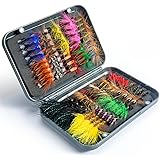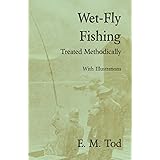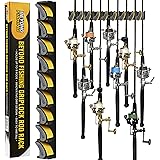Embarking on a high-altitude adventure often presents a unique blend of exhilaration and challenges, as perfectly illustrated in the recent “Alpine Lake Camping and Fishing Trip” video. One might recall the familiar rush to beat the fading sunlight, navigating winding mountain roads, and then the final push up a trail, backpack heavy but spirits light with the promise of crisp alpine air and the thrill of the catch. Such journeys require meticulous planning, adaptability, and a deep appreciation for the natural world. This article aims to expand upon the experiences captured in the video, providing further insights and practical considerations for those inspired to undertake their own high-altitude excursions, focusing on the critical aspects of alpine lake camping and fishing.
Navigating High-Altitude Terrain: The Ascent to Spud Lake
The journey to Spud Lake, situated at approximately 9,500 feet, commenced with the characteristic scramble against the clock, a scenario often encountered by weekend warriors. A late start, with the drive and subsequent hike pushing arrival close to dusk, necessitates heightened awareness regarding trail conditions and camp setup. High-altitude environments are distinguished by reduced oxygen levels, which can significantly impact physical exertion, making even a relatively easy hike more demanding than anticipated. Consequently, hikers often experience increased fatigue, necessitating more frequent breaks, a factor wisely acknowledged during the ascent in the video.
Furthermore, the environmental conditions at such elevations can change rapidly, with temperatures dropping considerably as the sun dips below the horizon. As observed during the hike, the beauty of the surrounding landscape, including small beaver ponds, provides ample motivation despite the physical toll. These ponds, integral to the alpine ecosystem, not only enhance the scenic value but also frequently harbor brook trout, offering tempting stops for anglers. However, the urgency of establishing camp before complete darkness descends typically takes precedence over lingering at these picturesque spots.
Optimal Timing and Preparation for High-Altitude Camping
While an impromptu late-afternoon departure can add a certain adventurous thrill, strategic timing is generally advised for high-altitude expeditions. Departing earlier in the day allows for ample daylight to reach the campsite, establish shelter, and gather necessary resources like firewood without undue haste. This approach minimizes the risks associated with navigating unfamiliar terrain in low light, such as potential falls or misdirection. Moreover, arriving earlier permits more time to acclimate to the elevation, which can mitigate symptoms of acute mountain sickness.
Preparation for high-altitude conditions invariably includes packing appropriate gear capable of handling significant temperature fluctuations. Even on a warm day, night temperatures at 9,500 feet can plummet, often below freezing, necessitating insulated sleeping bags, warm clothing layers, and a reliable shelter. Furthermore, given the unpredictable nature of mountain weather, rain gear and emergency supplies are considered indispensable. The proactive carrying of essentials, such as a sturdy backpack and a tent, is foundational to a successful and safe high-country experience.
Mastering the Camp: Shelter, Warmth, and Sustenance
Upon reaching the chosen campsite at Spud Lake, the immediate priority becomes the efficient establishment of a functional camp. This process, often conducted under the dim light of dusk in alpine settings, requires practiced movements and a clear understanding of sequential tasks. Securing the tent to protect against potential winds and cooling temperatures is paramount, followed by the collection of firewood. The video notably highlighted the immediate drop in temperature, underscoring the necessity of a warm jacket and a promptly ignited fire for comfort and morale.
Advanced Fire Starting Techniques in Damp Conditions
Starting a fire in the backcountry, especially when tinder and kindling might be scarce or damp, often demands ingenuity and preparation. The video’s demonstration of utilizing resin-impregnated tree bark serves as an excellent example of employing natural resources effectively. This resin, being highly flammable, allows for quick ignition, even with minimal friction. In addition to natural tinder, carrying a small supply of prepared fire starters, such as dryer lint or commercially available options, is a prudent measure, significantly increasing the likelihood of successful ignition when conditions are challenging.
Furthermore, the technique of “batoning” larger logs into smaller, more manageable pieces is crucial for building a sustainable fire. This process, illustrated in the video, facilitates the exposure of drier wood from the log’s interior, enabling more efficient combustion. It is also imperative to adhere to Leave No Trace principles, which dictate that only fallen, dead trees should be used for firewood, thus preserving the ecological integrity of the forest. The use of a Laplander saw, as demonstrated, simplifies the processing of these larger logs, making the task less arduous.
Water Purification and Unexpected Challenges
Access to safe drinking water is a non-negotiable aspect of backcountry camping. The video correctly emphasized the boiling of lake water to ensure its potability, a method widely recognized for its effectiveness against most waterborne pathogens. Alternatively, modern filtration systems or chemical purification tablets are commonly carried by hikers for convenience and redundancy. While boiling is highly reliable, it does consume fuel and time, thus requiring careful planning.
Camping in remote areas can also present unexpected personal health challenges, as experienced during the night at Spud Lake. An episode of gastrointestinal discomfort, while potentially linked to diet or other factors, highlights the importance of carrying a comprehensive first-aid kit that includes remedies for common ailments. Adequate rest is also crucial for recovery and maintaining energy levels, though sometimes elusive in unfamiliar environments. It is often observed that a difficult night can still give way to a productive morning, especially when fueled by a warm meal like the Mountain House breakfast mentioned.
The Art of Alpine Angling: Pursuing Brook Trout
The dawn at Spud Lake, despite the previous night’s discomfort, brought with it the promise of excellent fishing conditions. Brook trout, known for their vibrant colors and spirited fight, are a prized catch in many alpine lakes. These fish thrive in cold, clear, oxygen-rich waters, often found in the higher elevations. The observation of trout rising near the campsite signifies active feeding behavior, a clear indicator for anglers to prepare their gear.
Fishing success in these environments is frequently observed to improve as the day progresses and air temperatures warm, influencing insect activity and subsequently fish feeding patterns. Early mornings, while cold, can still be productive, especially as the sun begins to hit the water. Anglers typically adjust their lure or fly selection based on the specific conditions and observed insect hatches, aiming to mimic the natural food sources available to the brook trout.
Ethical Fishing Practices and Brook Trout Ecology
The practice of ethical fishing is a cornerstone of responsible outdoor recreation, particularly when targeting sensitive species like brook trout. A critical element is the proper handling of fish intended for release, which includes wetting one’s hands before touching the fish. This simple action helps to protect the fish’s protective slime coat, reducing the risk of infection and improving its chances of survival post-release. Catch and release fishing allows for the sustained enjoyment of fisheries for future generations.
Occasionally, a fish may be deeply hooked, making release without severe injury unlikely. In such instances, the decision to humanely dispatch and consume the fish, as demonstrated in the video where one of the six or seven caught fish was kept, aligns with ethical angling principles that prioritize minimizing suffering. Brook trout, being an excellent table fare, provide a delicious reward for a hard-earned catch. Furthermore, understanding brook trout habitats, such as the preference for beaver ponds with their abundant insect life and varied depths, can significantly enhance angling success.
Embracing the Wilderness: The Journey Back and Lingering Impressions
The return journey from Spud Lake offered a final opportunity to immerse oneself in the stunning alpine environment. Descending the mountain often provides different perspectives on the landscape, with views previously unseen during the upward climb. The “ocean of green” and the intricate series of beaver-created pools serve as a testament to the dynamic and thriving ecosystems supported by these high-altitude waters. It is understood that beavers, through their dam-building activities, create a mosaic of aquatic habitats that are vital for numerous species, including the brook trout.
Taking a break at a lookout point, approximately halfway down, not only provides a moment of rest but also a chance for reflection on the entire experience. These moments of quiet contemplation, surrounded by unparalleled natural beauty, are often cited as the primary motivation for undertaking such demanding trips. The blend of challenges, physical exertion, successful angling, and the sheer majesty of the mountains culminates in memories that endure long after the gear is unpacked. The sense of accomplishment derived from an alpine lake camping and fishing trip, successfully executed, frequently inspires plans for future expeditions into the wilderness, where nature’s profound beauty and the thrill of discovery perpetually beckon.








